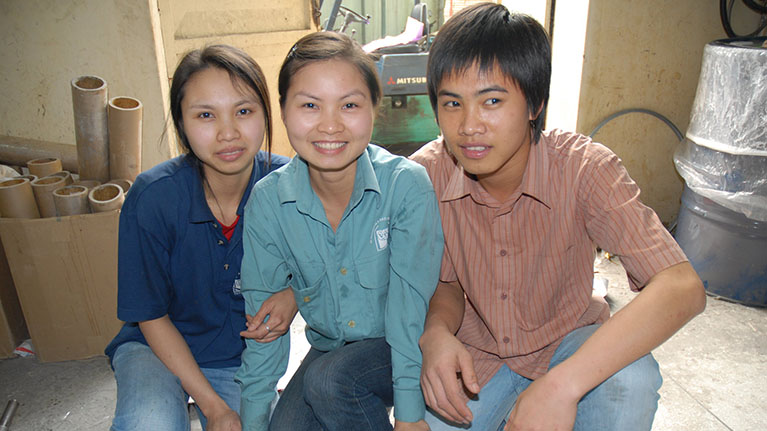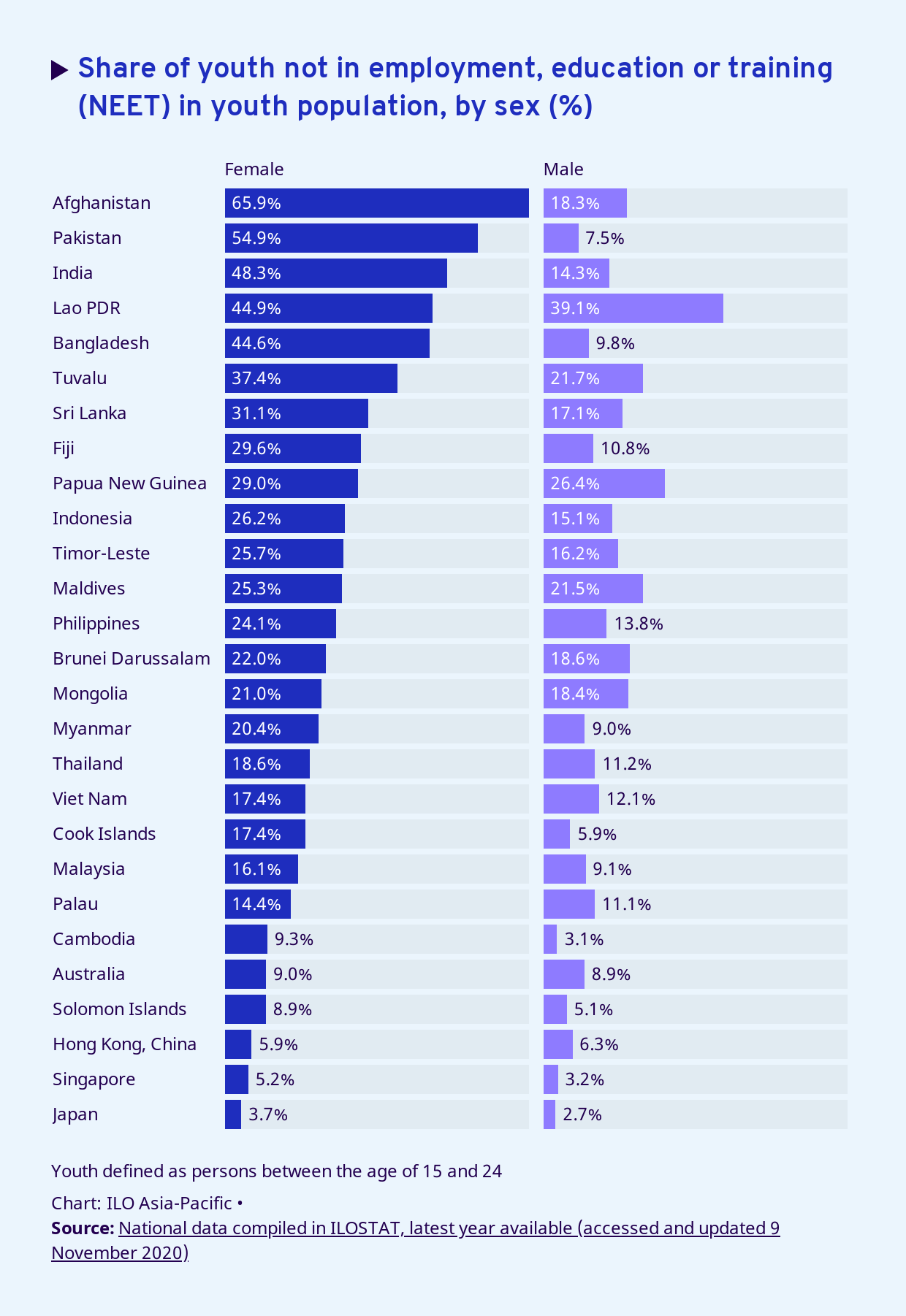Global Employment Trends for Youth 2020
ILO global report sheds light on the youth employment challenge in Asia-Pacific
The deterioration in Asia and the Pacific of a number of youth labour market indicators calls for a renewed focus on integrated, gender-responsive labour market policies to address the youth employment challenge.

According to the Global Employment Trends for Youth 2020 (GET youth 2020), the youth unemployment rate in the Asia and the Pacific region has risen since 2012 and is estimated at 14.1 per cent in 2020, compared to 13.7 per cent globally. Prior to 2018, the youth unemployment rate in the region was below the global average.
Latest data shows that most young workers in Asia and the Pacific are in informal jobs, with 86.3 per cent of the young population in informal employment compared to 67.1 per cent for the adult population.
Although labour market context and challenges encountered by youth in the labour market vary substantially across the region, the proportion of youth not in employment, nor in education or training (NEET) in Asia-Pacific has also been increasing since 2012. The NEET rate in the region is estimated at 24.4 per cent in 2020, compared to a global rate of 22.3 per cent.
The report shows that young women are almost three times more likely to be neither employed nor in education or training than young men. The gender gap in NEET rates is particularly large in Southern Asia.

ILO Employment Specialist Felix Weidenkaff says: “A sluggish global economy and trade tensions are some of the issues weighing on labour markets and youth employment prospects in the region. Such developments can be particularly detrimental to youth as their employment prospects, relative to older workers, are more sensitive to economic downturns,”
“And now with the recent COVID-19 epidemic, which has disrupted economic activities in the region and around the world, the situation will require further concerted efforts, integrated policies and investments to support the transition of young people into productive employment.” Weidenkaff adds.
Education on the rise, declining extreme working poverty
Partly a result of more young people participating in education, the youth employment-to-population ratio has declined by over five percentage points since 2012, and is estimated to reach 32.8 per cent in 2020, which is lower than the global estimate of 35.4 per cent.The report also finds that the extreme working poverty rate has continued to decline in recent years, falling from 13.9 per cent in 2012 to 5.8 per cent in 2020,a trend largely driven by Eastern Asia, and China in particular.
Global impact of technology
Globally, young people who are employed face a greater risk than older workers of losing their jobs because of automation, and those with vocational training are particularly vulnerable, the report shows.“This reflects how the occupation-specific skills imparted by vocational training tend to become obsolete faster (...) than general education skills,” the report says. It calls for vocational training programmes to be revised and modernized so that they meet the changing demands of the digital economy.
GET Youth 2020 shows that those who do complete higher education are less likely to be at risk of their jobs replaced by automation. However, they face other issues because the increasing number of youth with higher level degrees threatens to outpace the demand for graduate labour, pushing down graduate wages.
“Not enough jobs are being created for these young people, meaning the potential of millions is not being properly tapped,” said Sukti Dasgupta, Chief of the Employment and Labour Market Policies branch of the ILO Employment Policy Department. “We can’t afford to waste this talent or this investment in learning if we are to meet the challenges posed by technology, climate change, inequality and demographics. We need integrated policy frameworks and responsive training systems, designed using dialogue between governments, workers and employers.”
For further information, please contact
Ms Jiraporn WongpaithoonILO Regional Office for Asia and the Pacific (Bangkok)
jiraporn@ilo.org
Or
ILO department of communication (Geneva) newsroom@ilo.org